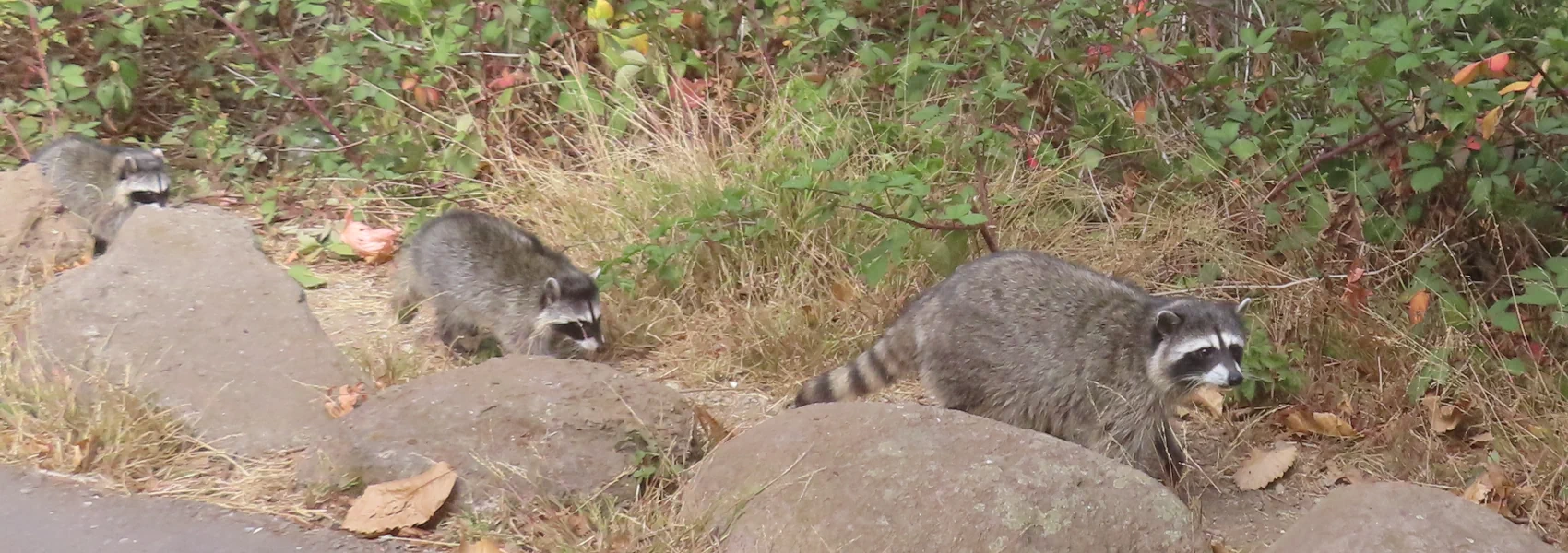North Lake raccoons
by
Isn't this where we saw a bunch of raccoons in 2020, one of those times it was really hot and we came to park? And there were way too many people who didn't get the concept of social distancing, which maybe didn't matter so much outdoors anyway but we didn't know that then, and the raccoons were also definitely way too bold and willing to get near people. Yeah. I remember that.
That was roughly the conversation but I don't remember which part of it was me or Paul as we walked along the side of North Lake, part of the Chain of Lakes in Golden Gate Park. As we rounded the bend I saw, guess what, a raccoon, walking along the path, and also a lady birdwatching, completely uninterested in the raccoon walking by her and then heading down slope through the underbrush, toward the lake. So yeah, that was definitely the spot.
We sat down on a bench to enjoy the lake, and, to my admittedly fairly mild surprise, saw several sorties of raccoon go forth and return.
First there was this one guy.
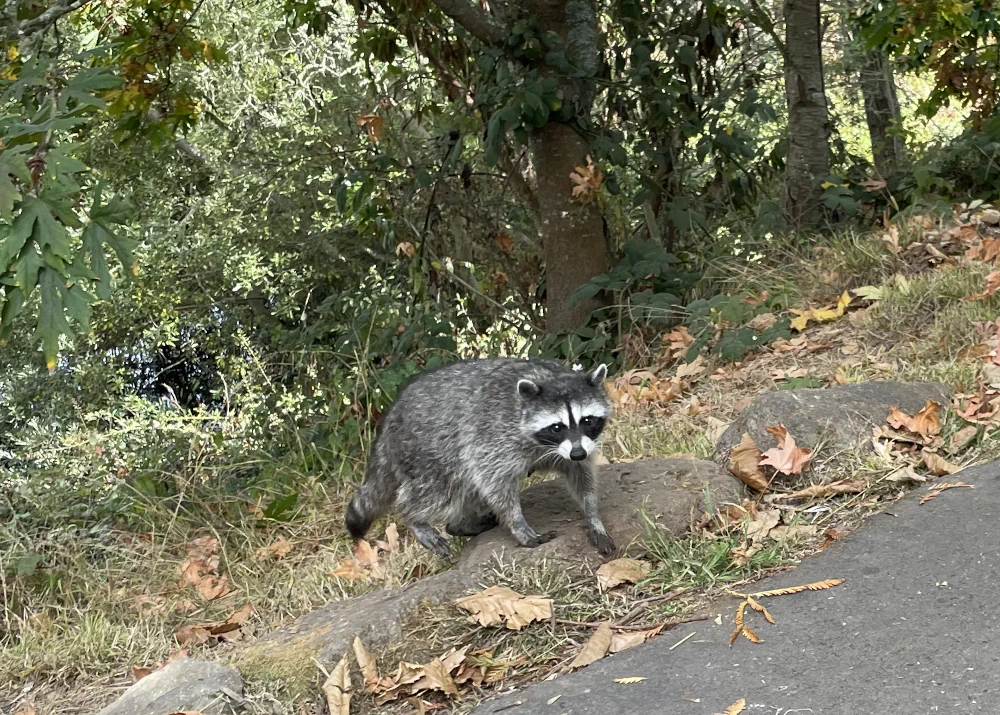 A raccoon emerges from the underbrush.
A raccoon emerges from the underbrush.
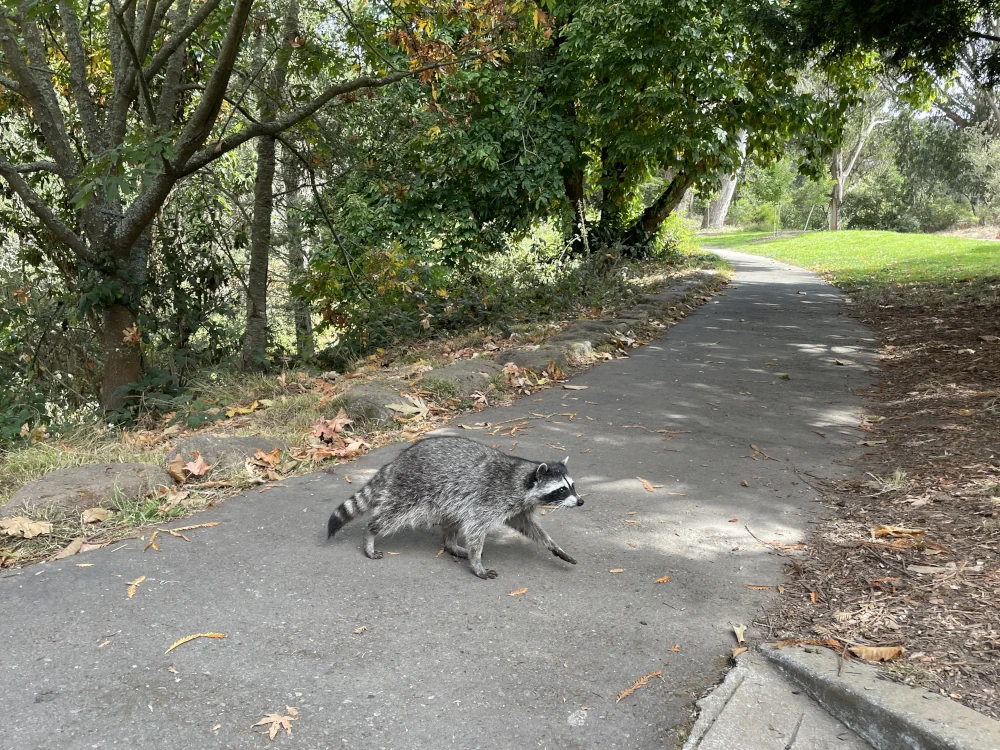 A raccoon crosses the paved path.
A raccoon crosses the paved path.
Then, an adult and two kits, presumably a mom and her young, emerged from the thicket by the lake, went across, and returned. I was too slow grabbing my camera and only have photos of the return journey.
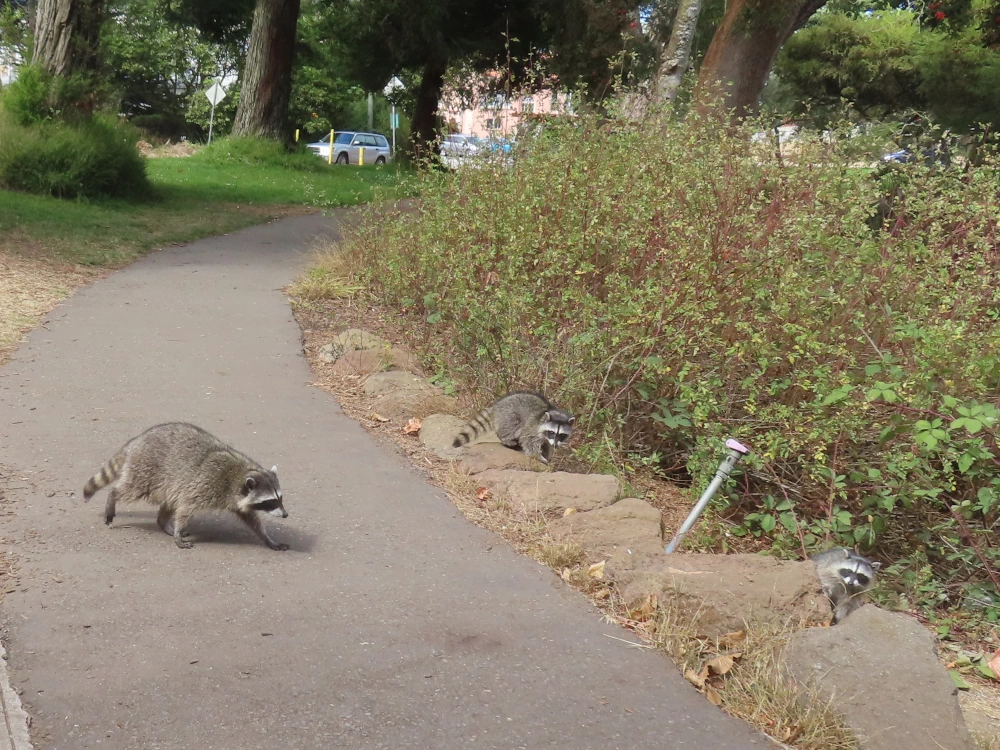
The kits wait for the adult raccoon to rejoin them.
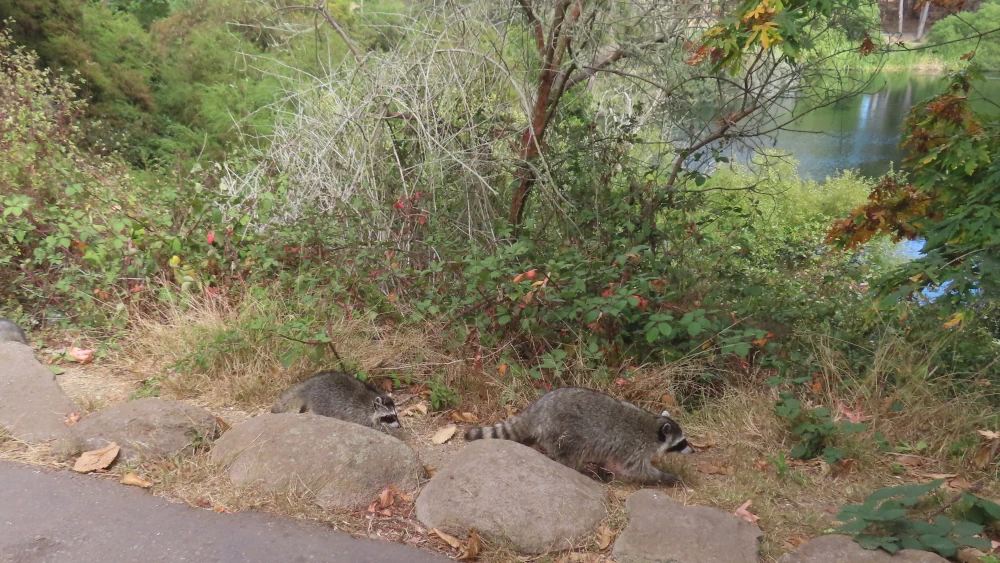
The raccoons return to the thicket by the lake.

The raccoons turn away, showing their glorious striped tails.
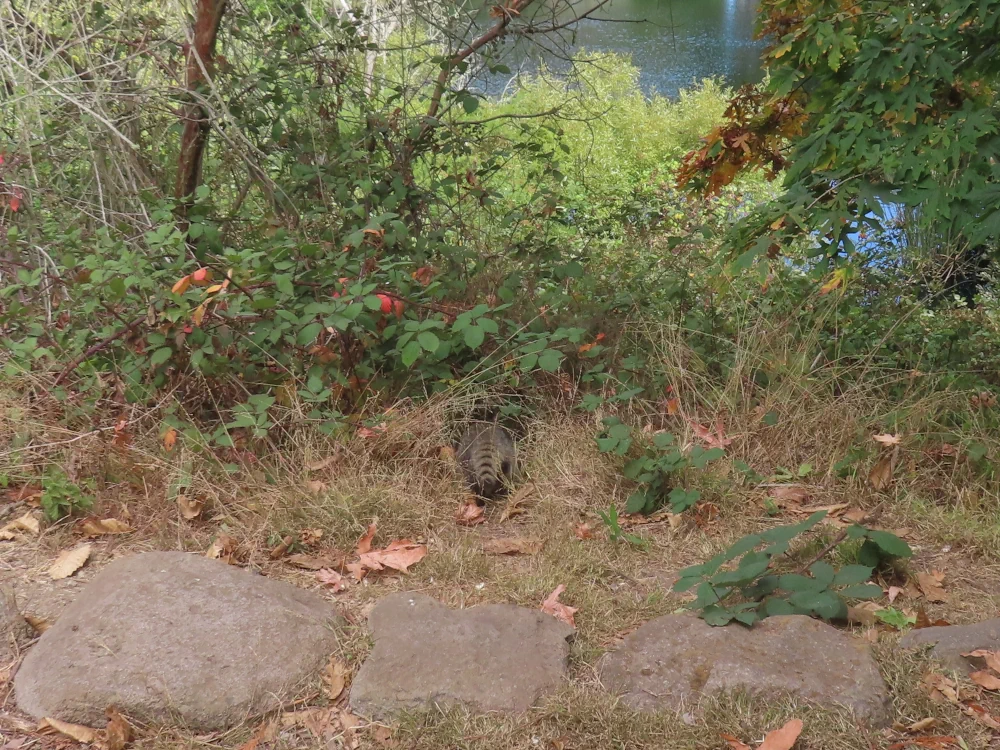
Can you see the last tail as the raccoon disappear down into a tunnel of grass?
While it's surprising to see them out during the day and so bold, there's nothing strange about raccoons living in Golden Gate Park. It's their home. They eat grubs and insects and sometimes small mammals. In turn, they are prey to coyotes, and sometimes great horned owls. I know. Can you imagine it? The owls only prey on young raccoons but still! It's also not necessarily a sign that something is wrong if raccoons forage during the day, especially when they have young and might want to take extra opportunities to forage food for them.
Unfortunately, it's also possible that urban raccoon get used to humans and human food, which makes them a little more bold than they should be. Most people know better than to feed wild animals, but even when people don't feed animals on purpose, we effectively feed them by accident by dropping food or leaving garbage. Human food isn't healthy for them, and if they get too used to humans they might start getting aggressive. That's not good for us or for them. Though sadly, it's usually worse for them.
Keeping the Wild in Wildlife: It's NOT just a few peanuts #
Now that I've veered towards a slightly nagging public service announcement, I'm going to drop a real PSA about not feeding wildlife. I know some people will see this post and decide to go see the cute racoons. You totally should! But please keep your distance and don't feed them--on purpose or by accident.
"Keeping the Wild in Wildlife: It's NOT just a few peanuts" is an absolutely adorable stop motion animation about why feeding animals is harmful to them, and how you might be accidentally feeding wildlife even if you don't mean to.
